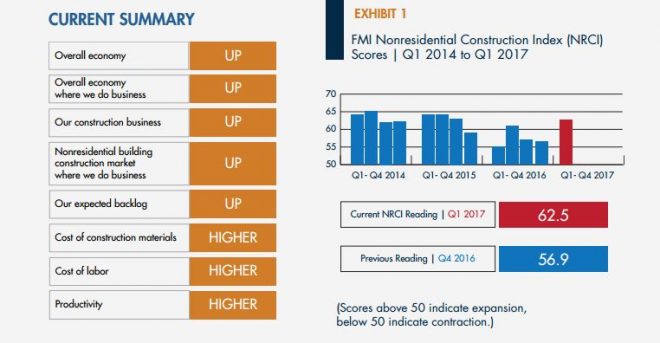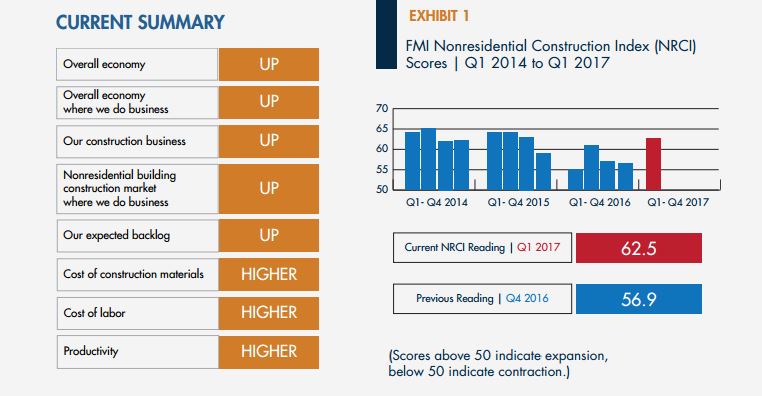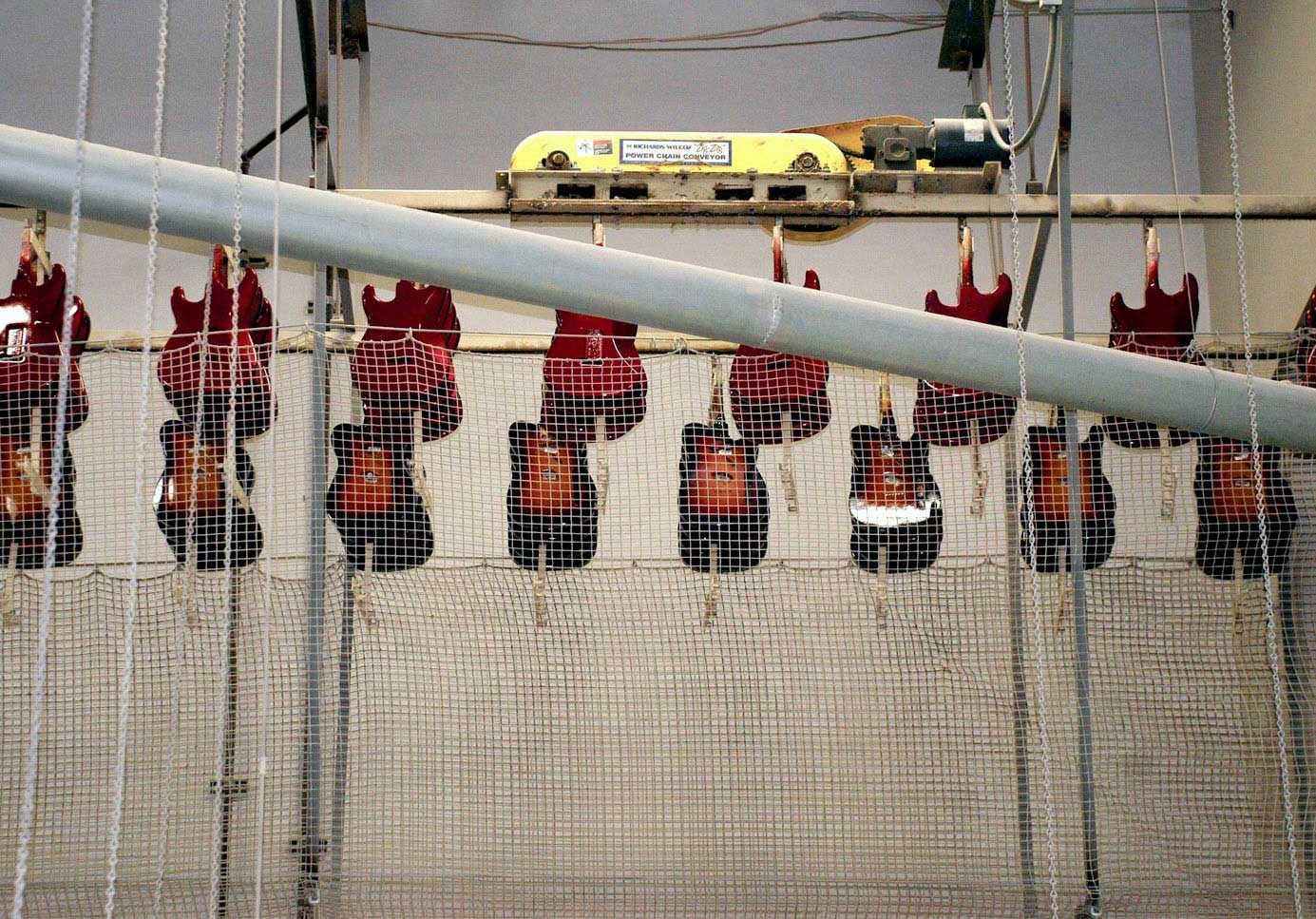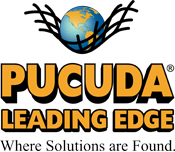
The first quarter of 2017 rumbles with growing consumer confidence and a number of other key economic indicators that signify more significant growth than we’ve seen in the last few years. The construction sector, as always, will help to directly drive growth in other areas like energy, manufacturing and business services. Not enough can be said about the impact of a healthy construction market on a prosperous country. At the risk of sounding too bullish, we’re very excited about the possibilities for a construction boom in just about every region of the country over the next few years.
The FMI Nonresidential Construction Index reports that almost every component of the construction industry has moved in a positive direction through the first quarter of 2017. This trend was counter to some analyst’s expectations but it appears to be strengthening. Some of our optimism is buoyed by what we’ve been reading in the FMI First Quarter Report.
Pictured below is a graphic from the report clearly showing how every market indicator for nonresidential construction is up.

(Image from Page 2 of FMI NRCI)
It’s All about People!
Chief among the concerns in the construction industry, made more challenging with increased activity, is finding enough skilled labor to meet demand. This was already a big issue, even with slow but steady growth leading up to 2017. Growing pains most often include staffing, but as you may often hear, it can be “a good problem to have.” Most would agree that the need to invest in recruitment is a far better problem than the need to let go of good people.
There are other issues for Architects, Engineers and Contractors to address in the realities of 2017. According to FMI, increasing productivity, keeping up with lean construction technologies, and finding the most profitable work are weighty concerns while staffing continues to be the top priority.
What Construction Industry Leaders Say about 2017…
The FMI Nonresidential Construction Index summarizes the biggest challenges for 2017. Available labor, changes in technology, the cost of healthcare and keeping a quality project backlog tend to weigh on the minds of construction executives even as business looks to be strong on the horizon. Some of the expert panelists’ comments informing the report provide interesting peer-to-peer insights. We’ll paraphrase some of the more notable comments here:
- There is less available labor. The competition is hiring away some of our key employees…
- It’s still hard to find a quality backlog and manage the succession…
- We need to find talented engineers and give quality people an attractive career path…
- Providing health insurance and benefits for our employees is more expensive, driving up our project fees…
- Managing growth will be vital in order to avoid overextension and excessive risk…
- Inflation in wages and materials could slow the pace of growth…
- How will the new administration’s policies play out? How much is talk?
While these comments represent a mixed set of experiences, most of them point to the challenges of an expanding rather than flat or contracting market. They’re mostly about finding and keeping good people through the various cycles of project succession in a growing economy.
The Dodge Momentum Index clearly backs up the positive trends we’re seeing in nonresidential building projects. The index measures projects in planning, which have been shown to lead construction spending for nonresidential buildings by a full year. “On a year-over-year basis the Momentum Index is 22% higher, with commercial planning up 28% and institutional planning moving 15% ahead of last year. This suggests that construction activity will continue to see further growth as the year progresses.”
Why is our focus on non-residential construction? Because its impact is usually larger scale, requiring numerous fall protection and public safety considerations. We provide Perimeter Safety Netting systems which are often mandated by local code in the commercial building segment. We offer ready-made netting systems as well as custom-engineered fall protection and debris safety netting solutions.
Keeping good people means keeping them safe!
Here we get back to the crux of what challenges so many firms in a growing economy – people. One of the most important aspects of a job is how safe the employee feels while at work. Workplace safety must be a high priority, not just to comply with OSHA regulations, but because human life and health are priceless assets that require more than adequate safety measures. Protective rails, netting and harnesses provide a welcomed safety culture for workers in potentially dangerous situations, adding to their comfort level and productivity. The investment in safety equipment pays off in fewer injuries and sometimes saved lives. It also lets your people know that you have their back when it comes to workplace hazards.
As our most recent blog article points out, OSHA has expanded the options for safety requirements on all industrial walking working surfaces and the methods have come largely from the construction sector. It’s crucial to understand what types of safety netting your job site requires to keep people safe from falls as well as falling debris. If you have questions about this, feel free to call us at 800-241-7330. We’re here to help keep your job sites safe while you continue to manage the growth of your business in what promises to be a fast-growing market in 2017 and hopefully beyond.








